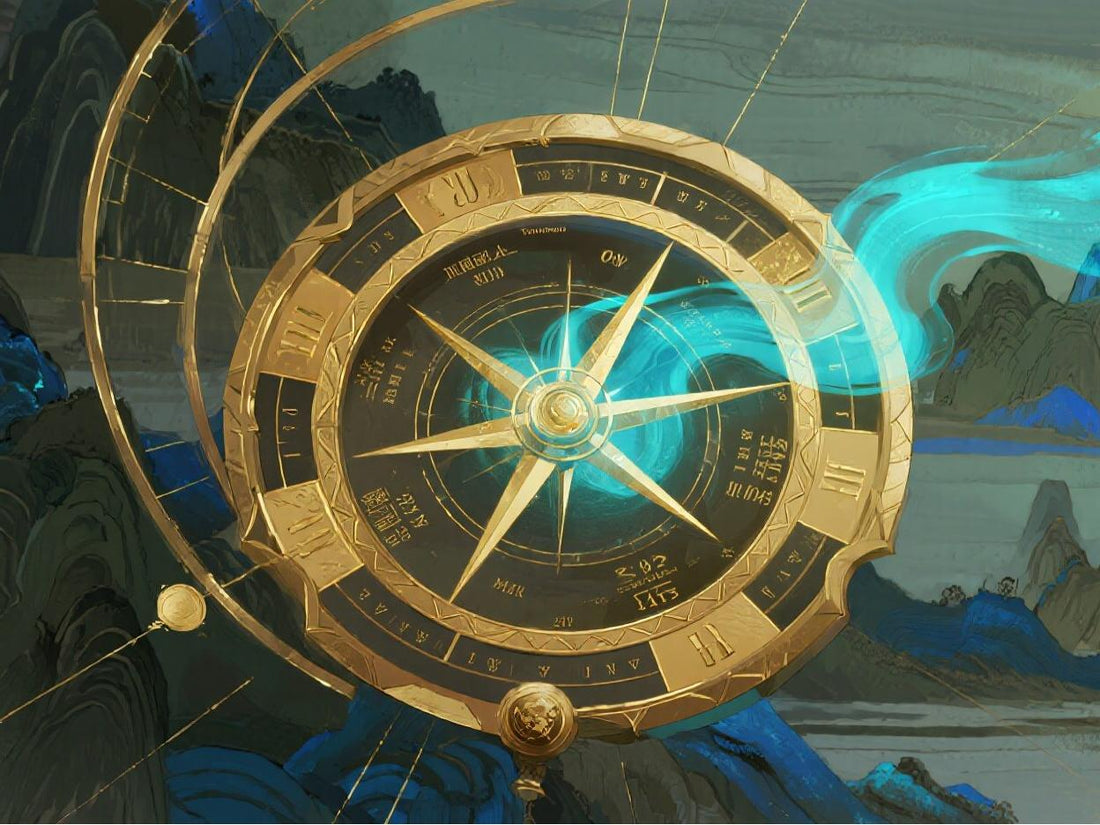
Unveiling the Luopan: A Cultural and Technical Analysis
Share
The Feng Shui compass, known as Luopan (罗盘), is far more than a directional instrument—it is a cosmological interface connecting heaven, earth, and human destiny. For over a millennium, this intricate geomantic tool has guided the placement of palaces, tombs, and homes across East Asia. Unlike a simple magnetic compass, the Luopan integrates astronomy, geography, and metaphysics into concentric rings of symbols, each layer revealing hidden relationships between space, time, and directional energy. This article unravels its cultural roots and technical innovations, from Song Dynasty magnetized needles to modern GPS-augmented applications.
1、Historical Evolution: From Sinan to Sacred Geometry
The Luopan’s origins trace back to the Han Dynasty’s Sinan (司南), a spoon-shaped lodestone device aligned with Earth’s magnetic field. By the Song Dynasty (960–1279 CE), magnetized needles replaced spoons, enabling precise orientation—a breakthrough documented by polymath Shen Kuo in Dream Pool Essays. He noted: "The needle often inclines slightly east, never pointing directly south"—the world’s first record of magnetic declination .
Early Luopans featured three core rings:
•Earth Plate (地盘): The innermost layer marking 24 directions (24 Mountains), used for terrain analysis.
•Human Plate (人盘): Offset by 7.5° to account for regional energy shifts.
•Heaven Plate (天盘): Aligned with astral forces for timing rituals .
These layers reflected Daoist cosmology: human actions (Human Plate) mediating between terrestrial patterns (Earth Plate) and celestial order (Heaven Plate).
2、Anatomy of a Luopan: Geomancy Tool as Cosmic Matrix
A classical Luopan contains 7–36 concentric rings, each decoding environmental energies:
|
Key Layer |
Function |
Symbolic Logic |
|
24 Mountains |
Primary directional grid (15° per sector) |
Links directions with Five Elements |
|
64 Hexagrams |
Overlays I Ching trigrams on方位 |
Predicts energy interactions |
|
Heavenly Stems/Earthly Branches |
Combines time cycles with space |
Aligns construction with auspicious dates |
|
Red Cross Thread |
Reference lines for plotting angles |
Visualizes "poison arrows" (Sha Qi) |
Modern Luopans like the Four-in-One Layout Compass integrate these with user-friendly features: detachable Liji Rules for floor-plan analysis and flying star charts for quick energy mapping .
3、Magnetic Declination: The Technical Paradox
A critical challenge in Luopan use is reconciling magnetic north (measured by the compass) with true north (geographic north). As Shen Kuo observed, magnetic poles deviate geographically—a gap called magnetic declination. In Beijing, declination is +5.8° (east); in Ürümqi, it’s -2.4° (west)
Why this matters in Feng Shui:
•An uncorrected declination distorts directional energy readings. For example, the Ming Tombs’ Changling Mausoleum was designed at 191.6° (癸山丁向 Guǐ-Shān Dīng-Xiàng). Modern GPS confirms its true orientation is 185.8°, but adjusted for Beijing’s +5.8° declination, the Luopan reading aligns perfectly .
•Traditionalists argue human bodies respond to magnetic fields, making declination irrelevant. Technologists counter that satellite mapping (e.g., Google Compass) now enables declination-adjusted orientation .
4、Practical Application: From Tombs to Smartphones
A. Classical Landform Analysis
The Luopan’s 24 Mountains ring guided imperial projects. When Ming Dynasty architects planned the Forbidden City, they used the Earth Plate to align gates with protective mountains (Black Tortoise) and energy channels (Azure Dragon) .
B. Modern Urban Adaptations
•Digital Luopan Apps: Tools like Chinese Feng Shui Compass overlay real-time declination data onto virtual rings, though electromagnetic interference in cities limits accuracy .
•Satellite Hybridization: Apps like Google Compass or Ovi Maps calculate true orientation, then convert to magnetic readings using local declination values . For instance:
•Anti-Interference Tools: The Four-in-One Compass replaces magnetic needles with laser-aligned Liji Rules for steel-filled apartments .
5、Cultural Preservation in the Digital Age
While apps democratize geomancy tools, traditionalists like Ye Binghui (杨筠松堪舆文化 inheritor) emphasize the Luopan’s ritual significance. As he stated at a 2025 Ministry of Construction symposium:
"We’re not reviving superstition but decoding a language of land ethics. The Luopan teaches balance—how to build without violating natural currents."
Contemporary innovations bridge this divide:
•Academia: Studies like Chen Jianyu’s Luojing Dingmenzhen analyze Ming Dynasty compass manuals to preserve calibration techniques .
•Craftsmanship: Artisans in Anhui still hand-carve disks using lacquered nanmu wood, embedding astrological data via laser etching.
Conclusion: The Compass as Living Heritage
The Luopan endures because it merges measurable science (declination, orientation) with cultural wisdom (directional energy, cosmic harmony). In an era of GPS, its layers remind us that space is never neutral—it pulses with histories, energies, and choices. As cities globalize, this ancient geomancy tool offers a radical proposition: That buildings should not dominate landscapes, but converse with them. Whether through a smartphone app or lacquered wood, the Luopan’s true north remains unchanged—the quest for equilibrium between human ambition and the unseen forces that shape our world.
